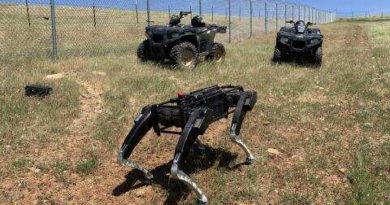Wildlife Trafficking – A monumental task where networks are key
By Azzedine Downes, President and CEO of the International Fund for Animal Welfare (IFAW).
Responsibilities are heaped upon us in our daily lives. From ensuring our own wellbeing to the wellbeing of our families and the community at large—assuming responsibility is a mainstay of adulthood, often an indication of growth, maturity, and even personal ability. But what happens when that burden of responsibility grows exponentially? When a role of responsibility grows to the point that the bearer is expected to become a ‘blanket expert on all things’? The end result is often a sense of overwhelm—of a task nearly impossible to complete. But, make no mistake — it is not the difficulty of the task per se but rather the volume of the ask.
Such is the situation in which so many border security officials find themselves facing day in and day out. An insurmountable charge where borders are expected to be hermetically sealed, poetically speaking, from all possible pitfalls related to migration. It is not limited however to human migration—they now face the added challenge of presiding over species migration, including both plants and animals. And yet, this doesn’t even begin to scratch the surface of the spectrum of illicit goods that are derived from each. From globally recognized illegal drugs that need no introduction to the intricately carved ivory trinket to the mystical jaguar tooth pendant. All these products are illegal—and they all migrate, thanks to humans, from one point to the next, from one border to another. We rely on the eyes and expertise of border security officials across the globe, in essence, asking them to recognize and stop any and all dangers related to the migration of wildlife products; and to do so within a span of no greater than 15 minutes.
It is untenable, especially to those who are given this task day in and day out. There is one saving grace in all of this that allows border security officials, and in essence society as a whole, to chip away at this herculean task. It is this—the concept of networks. The networks of those partners and agencies both directly and indirectly involved in the hallowed duties of border security, that continue to serve as a critical barricade against the migration and proliferation of illegal wildlife products across the globe.
To those immensely dedicated border security officials who tirelessly protect the world’s borders and who no doubt face this overwhelming challenge—the reality is, when it comes to illegal wildlife products and species, you do not need to be an expert. You have organizations like the one I lead at IFAW (International Fund for Animal Welfare) ready to assist you with whatever tools or expertise we have at our disposal—tools to assist you with identification of animal products or even release and re-habitation of seized animals back into the wild. Ultimately though, it is not about the actual product identified—it is about disrupting the network—in this case, the criminal network that brought that product or animal to the border in the first place.
At IFAW, our focus has long been on disrupting the network. Why? Because migration and travel and trade dynamics are all global. From source countries to transit countries to countries of final destination—the sheer magnitude of moving pieces involved in the trade and migration of illegal wildlife and associated products makes it ultimately impossible to place the burden of decision fully on the shoulders of the individual border security agent. If there are multiple links involved in the illegal trade chain, then there must be multiple parties—a network—collaborating together to create an effective decision-making process that gives the border agent the necessary tools to make informed decisions. These can include access to the expertise or trained eye of a wildlife biologist or an expert vet to the extensive technological tools from external partners that can provide image recognition at a rapid pace. Ultimately, these all boil down to tools that facilitate the sharing of information both between, as well as among, agencies.
Sharing information within organizations is always a challenge—regardless of the organization, regardless of the field. Agencies, like so many other organizations, work in silos far too often. We understand however that the sharing of information outside of long-established, trusted boundaries is even harder. This is not made any easier when dealing with profoundly sensitive information or where there may be issues of trust or competition. Will the sharing of information disrupt ongoing investigations? Will the information be kept secure? These are all valid questions. But know that there are those out there who you may not be aware of who can become a trusted partner. On behalf of IFAW, I offer our organization, our resources, our commitment. And we are just one of many.
Why do we offer this? Because tackling wildlife trafficking is not only an immense challenge, but also a responsibility that must be shared by all of us, not exclusively by those who work to secure our borders. And why? Because the issue of wildlife trafficking is one of immensely broad impact with implications that affect both the environment as well as humanity. From health concerns related to biological wildlife migration to broader threats of zoonotic disease, to a range of aspects associated with animal welfare to the deleterious impacts and repercussions of the turbulent black market trade—the tentacles of wildlife trafficking extend in some way to us all. It is a global problem.
As a global problem, it requires a global solution. For we all share in that same global goal—the protection and preservation of both humanity and the environment. If we are to achieve this noble goal, global stewardship is fundamental.
As someone who recently had the immense pleasure of participating in a convening of the World Border Security Congress in Lisbon, I recognize wholeheartedly the enormity of the challenge you face. The protection of nothing less than the world’s sacred borders. As we all work together to disrupt the extensive network involved in illegal wildlife trafficking, I offer you in return a different type of network—one of trusted partners and collaborators, of like-minded stewards willing to bear this immense mantle of responsibility. May we all join in this network so crucial to the wellbeing of the natural environment and of humanity itself.




